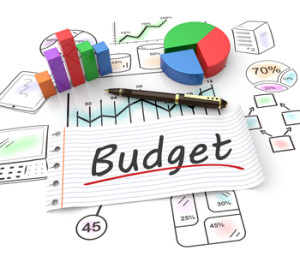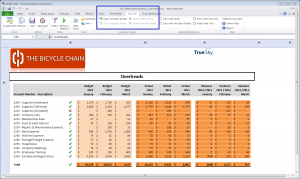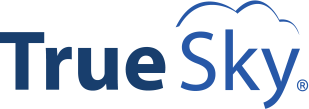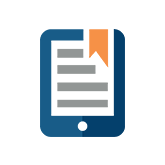forecasting and budgeting
This blog post is from our partner, TGO Consulting in their series, The Changing Role of Finance. It was written by Grantley Smith, Solution Advisor from TGO.

Back when I was doing actual accounting every day, I remember dreading budget season. It is like the opposite of Christmas – you know it is coming and prepare for it for ages – but get no presents at the end! In fact in a company that ran on a calendar year end, it even ended right around Christmas. And talking to some of our clients, it hasn’t changed much in the last 20 years. Yikes!
However, the role of the CFO has changed and there are many more demands and expectations with no more time added to the day. CFOs are facing increasing pressure to not only provide historical information but also use that information to design and build crystal balls, i.e. perform financial forecasting. What is going to happen tomorrow instead of yesterday? What if we expand our operations globally? What if we do something differently? Accordingly, we have seen the start of a dramatic transformation in the role of the CFO within organizations of all sizes, moving from strictly number crunching to becoming a strategic partner in planning, budgeting and forecasting.
So what do you do if you don’t have a crystal ball?
As anyone involved in the budgeting and planning processes knows, spreadsheets are king when it comes to accounting. They are used primarily for:
- Data collection
- Consolidation
- Distribution
But due to the inordinate amount of time needed from an administrative perspective, their use is limited. They have to be sent to managers, filled out, returned and compiled. Heaven forbid there is a question about a specific number in a spreadsheet (and there always is), because that just starts the process all over again. Not to mention the need to organize all supporting documents. Controlling the process is a full time job. The result is that accounting and finance departments spend 80 percent of their time collecting data and only 20 percent thinking about what the data means to the business.

Getting your head back into the clouds…
Fortunately there are software solutions available today to help finance simplify and speed up many of the time consuming processes they face, and these solutions are not as cost prohibitive as they were in the past. No longer are mid-sized and larger businesses limited to buying and installing massive and technically complex budgeting systems. There are less cumbersome, but extremely powerful solutions available (including True Sky!). These tools are designed to simplify and reduce the administrative functions associated with planning which in turn gives everyone, from the CFO on down, more time to:
- Think
- Evaluate
- Analyze the data
A process that in the past may have taken two weeks can now be done in a few hours. CFOs and other senior financial managers can now spend 80 percent of their time thinking and only 20 percent of their time collecting.
So how do I do that? (the technical bit)
Excel is still the best thing that ever happened to accountants. We all know that we can make Excel do anything we want it to. However, that is as much a bad thing as a good thing, because accountants also like control. Creating 400 spreadsheets and sending them out to department heads is the opposite of control and pulling it all back together at the end for one rolled up budget is a nightmare. This is where an actual budgeting and planning solution starts making sense.
The starting point for any good budgeting and planning solution is templates. For our 400 spreadsheets example, we helped one of our clients replace 400 manually-created spreadsheets with 20 dynamic templates with all the necessary data calculations and security. This provides some consistency for the users who need to provide data for the budget managers. Our solution also allows users to embed notes into spreadsheet cells, including qualitative facts to back up numbers. This reduces the back and forth between department managers as to how they arrived at the numbers.

Efficiencies in the budgeting and planning process help save time so CFOs can now shift their focus to strategic thought. They can delve into “what-if scenarios,” changing any part of the budget and looking at the results. Adjusting annual numbers in the past often meant dividing a number by 12, which totaled nicely at year-end but at no point in the year would the numbers actually be accurate. Today, managers can spread and adjust annual numbers automatically based on seasonality and get accurate comparatives throughout the year.
The administrative portion of the budgeting and planning process is a concern of the past if you have the right tools. By using the technology tools available, CFOs can now spend less time doing and more time thinking. These tools essentially become the crystal ball: more accurate forecasting and budgeting information so that you can better see into the future and, most importantly, a CFO who is better prepared to tackle the challenges associated with the planning, budgeting and forecasting process.
About the Author
Grantley Smith is a Solution Advisor for TGO’s Professional Services group. He has over 15 years of industry experience creating business solutions using Microsoft, Sage and True Sky Planning, Budgeting and Forecasting solution.
To learn more about a Corporate Performance Management (CPM) solution and improve your planning forecasting methods, register for a webinar.




